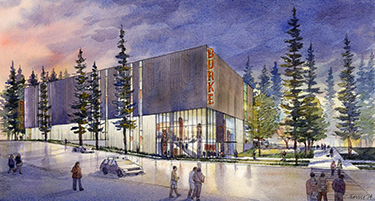|
Subscribe / Renew |
|
|
Contact Us |
|
| ► Subscribe to our Free Weekly Newsletter | |
| home | Welcome, sign in or click here to subscribe. | login |
Construction
| |
 |
May 12, 2016
Survey: Skanska
Specialty: Construction and commercial development
Management: Chris Toher, executive vice president and general manager, USA Building; Lisa Picard, executive vice president and regional manager, Commercial Development; Tony Taddeo, senior vice president, USA Civil
Founded: 1946
Headquarters: New York City (U.S.); Stockholm (global)
2015 revenues: $455.5 million (Puget Sound); $7.1 billion (company-wide)
Projected 2016 revenues: N/A
Projects: $121 million Tahoma High School and Regional Learning Center in Maple Valley; Burke Museum of Natural History and Culture in Seattle; Life Sciences Building at University of Washington
Chris Toher, Skanska executive vice president and general manager, answered questions from the DJC about trends and issues in the industry.
Q: In which sectors are you seeing growth or a slowdown?
A: The Seattle construction market continues to be robust. There has been a lot of activity — both in new construction and, more recently, renovation work — in the K-12, higher education, office, residential and healthcare sectors as people continue to move to the Puget Sound. Manufacturing is the only sector where we are seeing a slight slowdown.
Q: Are rising costs and the skilled labor shortage affecting Skanska?
A: Rising construction costs are impacting all of us in the industry. With any booming market comes labor and material shortages, which are currently concentrated in the glass and glazing, casework, vertical transportation, and mechanical and electrical trades. There’s a huge demand for labor, and all of the trades are over-extended to meet the demand.
Q: Is more prefab construction being used?
A: Over the last several years, we’ve seen a notable increase in the use of prefabrication to construct repetitive elements such as multi-trade racking systems (overhead racks that carry mechanical, electrical and plumbing equipment), entire bathroom pods, medical headwalls, and even structural elements.
Everyone is trying to find smarter ways to work and to deliver projects to customers. On one of our projects for the University of Washington, we are constructing a precast superstructure off-site, trucking it in, and erecting it like a kit of parts. This method allows us to complete work more quickly while better controlling jobsite safety, quality and cost.
We are always seeking opportunities to use prefabrication because it’s a great way to remove typical jobsite risks such as inclement weather or the site constraints that come with working in and around occupied buildings.
Q: What’s something unusual you’ve done recently?
A: For one of our manufacturing clients, we regularly complete work next to active assembly lines. This requires coordination between the Skanska team and the owner, but also requires creativity to find ways to complete the work without disrupting ongoing operations. For instance, we created a snorkel system for our excavation equipment to maintain air quality, and a traveling tent that minimizes the dust and noise generated by saw cutting. Finding the best solutions is a day-by-day process that happens in the facilities where we work. It’s never “business as usual.”
Q: How are rising land costs in Seattle affecting what gets built?
A: To make projects financially feasible for customers, developers are under more pressure to control overall costs. Rising land costs translate into higher rents, so tenants are paying a premium for new buildings and expect an ever-higher level of design and material quality. For a building to succeed in this environment, craftsmanship and creativity are more important than ever.
Other Stories:
- Another looming industry shortage: leaders
- Specialty Contracting Interior
- Specialty Contracting Exterior
- Specialty Construction
- Specialty Construction Demolition
- Tenant Improvement/Renovation
- Survey: Rush Companies
- Survey: The Walsh Group
- Survey: Lease Crutcher Lewis
- Survey: Swinerton Builders
- Survey: Adolfson & Peterson Construction
- Mechanical Construction
- Mixed-Use Construction
- Industrial Construction
- 3 keys to managing on-the-job injuries
- Top 10 equipment acquisition trends for 2016
- Does your fall protection plan start at the top?
- Taming energy hogs with efficient HVAC units
- WSDOT finishing ‘The Rest of the West’ on SR 520
- IPD takes preconstruction to the next level
- Eagle of Excellence • Multifamily Construction
- Commercial Construction ($1 million to $5 million)
- Community/Public Service
- Historic Preservation/Restoration
- Survey: Hoffman Construction Co.



